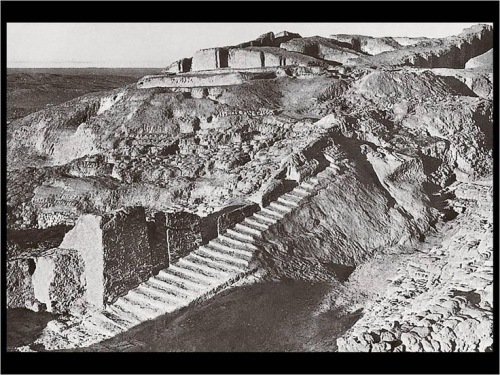Melvin: Who Built the First City? Cain? Enoch? Chousor? Or Nimrod?
by Estéban Trujillo de Gutiérrez
“The portrayal of the rise of civilization in Genesis 1–11, on the other hand, is generally negative and is devoid of any hint of divine assistance or bestowal of the arts of civilization. A key text in this regard is Genesis 4:20–22, in which the descendants of Cain found the guilds of nomadic shepherding, music, and metallurgy.
The statements are brief, merely indicating that Jabal was the founder of nomadic shepherding, Jubal was the founder of the art of music, and Tubal-cain was the first to work with metals.
If one considers the entirety of Genesis 4, one may also add to the list of new developments animal husbandry (v. 2), agriculture (v 2), city-building and urbanism (v 17), and polygamy (v 19).
Gunkel, following Wellhausen, reads the account as brief fragments of what were originally much fuller mythological narratives and suggests that they may originally have referred to deities, but even if this reading is correct for the original myths, the text in its present form has been largely de-mythologized, and the individuals and their accomplishments are completely human.
(Hermann Gunkel, Genesis (trans. Mark E. Biddle; Macon: Mercer University Press, 1997), p. 50. Wellhausen argues that the genealogies in Genesis 4 and Genesis 5 refer to the same individuals and were originally identical.
See Julius Wellhausen, Prolegomena to the History of Israel (New York: Meridian, 1957), pp. 308–09; see also E. A. Speiser, Genesis (AB 1; Garden City: Doubleday, 1964), pp. 35–36. If this is the case, then it is important to note that Cain’s genealogy has been distinguished from Seth’s by the insertion of episodes which give the entire list a negative overtone (e.g., Cain’s fratricide, Lamech’s murders).
See John Skinner, A Critical and Exegetical Commentary on Genesis (2d ed.; ICC; Edinburgh: T&T Clark, 1930), p. 115. Since the statements concerning the arts of civilization appear only in the Cainite genealogy, it is likely that their inclusion is for the sake of bringing upon them “guilt by association” with the dark line of Cain.

Ruins and Plan of the Anu Ziggurat and the White Temple. Uruk ( Present-day Warka, Iraq). c. 3300-3000 BCE.
https://www.pinterest.com/pin/168814686005734256/
Seth’s genealogy, by contrast, includes a number of statements which give a more positive impression to the whole list (e.g., humans calling on the name of Yahweh, Enoch walking with God). However, Gordan J. Wenham makes a case against seeing the two genealogies as originally identical. See Gordon J. Wenham, Genesis 1–15 (WBC, 1; Waco: Word, 1987), p. 110.)
Further indication of the human origin of civilization in Genesis 1–11 appears in the motif of city-building and urbanism. Interestingly, Mesopotamian myths attribute the origin of the earliest cities to the work of gods (e.g., Marduk’s construction of Babylon) or semi-divine heroes (e.g., Gilgamesh’s building of the walls of Uruk), while Genesis 4:17 attributes the first city to Cain, who names it after his first son, Enoch, with no indication of divine assistance.
(Westermann notes that the reading of the Hebrew text seems to indicate that it was actually Enoch who built the city, rather than Cain, until one reaches the phrase כשם כנן “according to the name of his son,” which he suggests may originally have read simply כשמו “according to his name” (Genesis 1–11, 327).
He further argues that it would be unusual for Cain to have been both the founder of agriculture and the first city-builder. Such accounts of the development of civilization typically do so by a succession of births in which each generation makes but one new contribution.
But this is not always the case, as The Phoenician History shows by attributing to Chousor (Kothar) the arts of magic, divination, prophecy, sailing, and fishing (see Albert I. Baumgarten, The Phoenician History of Philo of Byblos: A Commentary [Leiden: Brill, 1981], p. 143).)
Similarly, the building of several key cities in Mesopotamia, as well as the formation of the world’s first empire, is attributed to Nimrod in Genesis 10:8–12.”
David P. Melvin, “Divine Mediation and the Rise of Civilization in Mesopotamian Literature and in Genesis 1-11,” Journal of Hebrew Scriptures, 2010, pp. 7-9.


[…] Melvin: Who Built the First City? Cain? Enoch? Chouser? Or Nimrod? […]
LikeLike